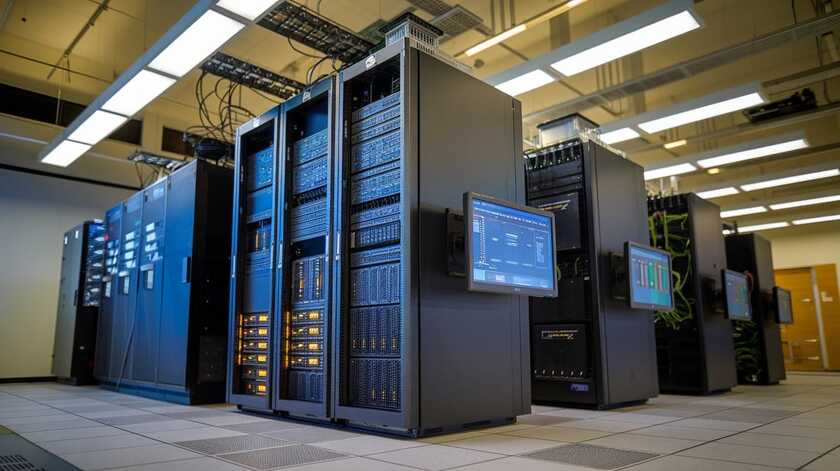The recent announcement of Elon Musk’s xAI Colossus cluster, featuring 100,000 NVIDIA H100 GPUs and a 150MW power supply, has set a new standard for AI supercomputing. As companies like OpenAI and other tech giants aim to match or surpass this achievement, they will likely face several challenges:
- Scalability and Integration: xAI Colossus’ massive scale and custom-built infrastructure will be difficult to replicate. Companies will need to develop innovative solutions to integrate and manage such a large number of GPUs, ensuring efficient data transfer and processing.
- Power and Cooling: The 150MW power requirement and massive heat generation will necessitate significant investments in power infrastructure and cooling systems. Companies may need to develop custom solutions or partner with specialized providers to meet these demands.
- NVIDIA Hardware and Software: xAI Colossus relies heavily on NVIDIA’s H100 GPUs and Spectrum-X ethernet networking platform. Companies may struggle to secure sufficient quantities of these components or develop compatible software and firmware to optimize performance.
- Data Center Construction and Logistics: Building and equipping a data center of similar scale and complexity will require significant resources, including land acquisition, construction, and infrastructure development. Companies may need to navigate local regulations and environmental concerns.
- Talent Acquisition and Retention: The development and operation of such a massive AI supercomputer will require a large team of experts in AI, computer architecture, and data center operations. Companies may face challenges in attracting and retaining top talent in this highly competitive field.
- Cost and Budgeting: The estimated cost of building and maintaining an AI supercomputer of this scale is likely to be substantial. Companies will need to allocate significant budgets and manage costs effectively to ensure the project’s viability.
To overcome these challenges, companies will need to invest in research and development, partner with specialized providers, and develop innovative solutions to integrate and manage their AI supercomputing infrastructure. The pursuit of xAI Colossus’ benchmark will drive innovation and advancement in the field of AI, but it will also require significant resources and strategic planning.
The Road Ahead for AI Supercomputing
The unveiling of xAI Colossus signals a transformative era for AI supercomputing, setting an ambitious benchmark that will inevitably drive the industry forward. However, the road to achieving comparable feats is fraught with challenges that demand unprecedented levels of innovation, collaboration, and strategic foresight.
Emerging Strategies to Tackle Challenges
Innovative Infrastructure Design
Companies must rethink data center architectures to efficiently house and manage GPU clusters at scale. Modular and liquid-cooled designs are likely to become standard, offering improved efficiency and scalability while reducing environmental impact.Alternative Hardware Solutions
With demand for NVIDIA’s H100 GPUs skyrocketing, organizations may explore alternatives, such as AMD’s MI300 GPUs or custom AI accelerators like Google’s TPUs. Developing proprietary hardware optimized for specific workloads could also mitigate supply chain constraints.Green Energy Integration
The 150MW power consumption highlights the importance of sustainable energy solutions. Collaborations with renewable energy providers, on-site solar or wind power generation, and advanced energy storage systems will be key to balancing operational needs with environmental responsibility.Decentralized AI Supercomputing
Companies might consider distributed or decentralized approaches to supercomputing. By leveraging cloud-based GPU resources such as The Theta Network's EdgeCloud Services for computation, organizations can circumvent some of the logistical and infrastructure challenges of centralized clusters.AI-Powered Operations Management
Ironically, AI itself could assist in managing these massive systems. Intelligent algorithms can optimize GPU workloads, predict maintenance needs, and streamline resource allocation, reducing both costs and complexity.
Impact on the AI Ecosystem
As tech giants and startups alike chase the supercomputing crown, the ripple effects will reshape the AI landscape. Expect breakthroughs in fields such as natural language processing, generative AI, and robotics as these machines unlock new levels of computational power. Additionally, the competitive pressure will accelerate advancements in energy-efficient hardware, cooling systems, and AI algorithms.
Final Thoughts
Elon Musk’s xAI Colossus has redefined the possibilities for AI infrastructure, but it’s more than just a showcase of technical prowess—it’s a catalyst for innovation. The challenges it presents to competitors will inspire solutions that benefit the entire industry. As companies gear up to meet or surpass this standard, the future of AI supercomputing looks brighter than ever.
The age of AI colossi is here. Will the next giant leap come from Musk’s peers, or an unexpected disruptor? Only time will tell.




























